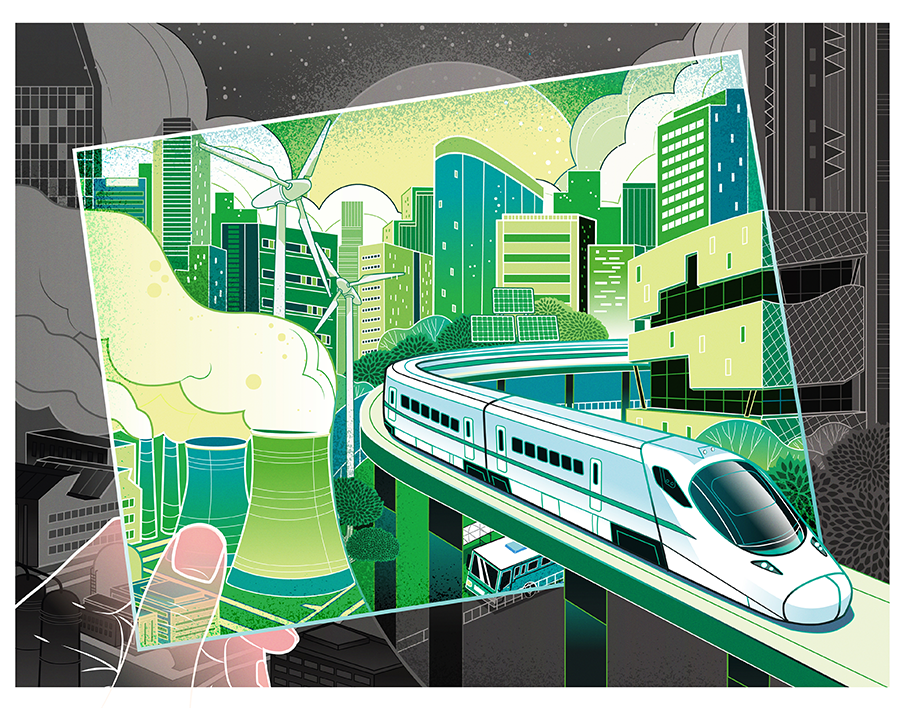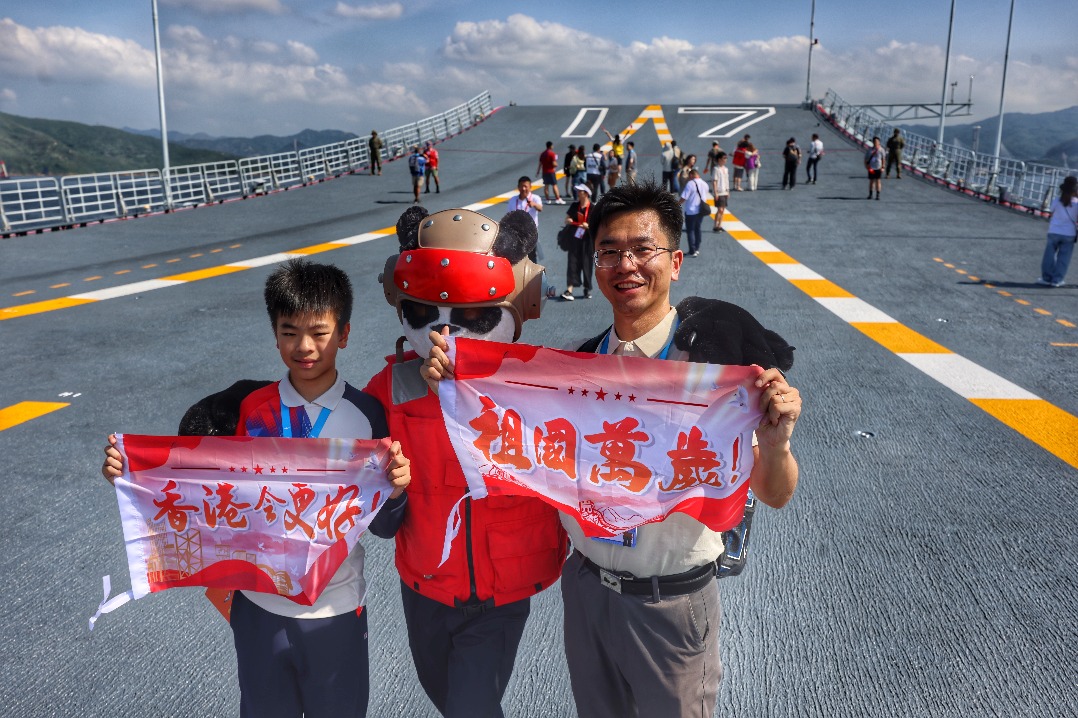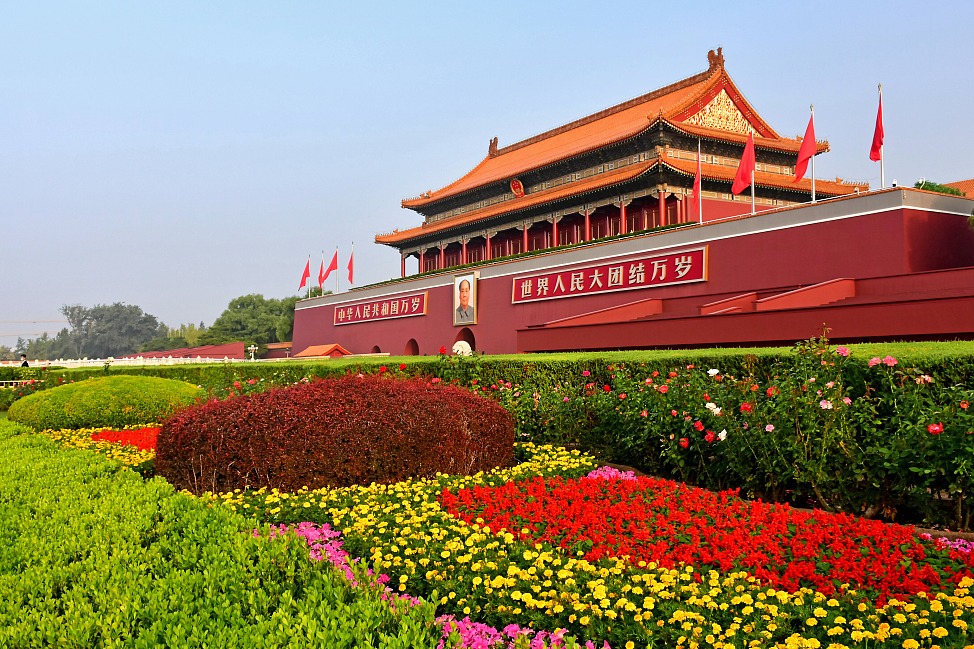Cabinet steps up air pollution controls


Ozone now second-biggest airborne pollutant after fine particulate matter
China will prioritize efforts to treat industrial pollution, replace small coal furnaces with clean energy and control emissions from diesel vehicles as part of intensified measures to tackle air pollution in key areas.
The State Council passed the decision at its executive meeting on Wednesday, pledging to make air pollution control measures more targeted while taking full account of factors that worsen air quality in the Beijing-Tianjin-Hebei region and neighboring areas.
The meeting, which heard a report from a research program that investigated the causes of heavy air pollution in the region during winter and autumn and possible solutions, also highlighted the need to control ammonia pollution from agriculture and animal husbandry.
With ozone pollution now an increasing problem, the meeting urged heightened scientific research on regionwide air pollution treatment, with steps to promote coordinated treatment of pollution from PM2.5 particulate matter and ozone.
Premier Li Keqiang said at the meeting that controlling air pollution and improving air quality is a matter of concern to the public, and the government must step up science-based treatment measures and promote green development.
China has seen continuous improvements in its air quality, with concentrations of PM2.5 particulate matter down by 10 percent in 337 cities across the country in the first half of this year, according to the Ministry of Ecology and Environment. PM2.5 refers to particles with a diameter of 2.5 micrometers or less that can invade even the smallest airways.
The improvement was even more significant in the Beijing-Tianjin-Hebei region and neighboring areas-one of the regions that has suffered the most severe air pollution in recent years-with PM2.5 concentrations down by 16.7 percent and the percentage of days with good air quality up by 12.6 percentage points.
However, concentrations of ozone rose to become the second-biggest airborne pollutant after PM2.5 in the first half, Liu Youbin, a spokesman for the ministry, said at a news briefing on Aug 28.
He said volatile organic chemicals are major contributors to the formation of ozone, and the ministry had come up with a work plan to tackle ozone pollution in the 79 hardest-hit cities from mid-July.
Chai Fahe, deputy head of the National Joint Research Center on Air Pollution Causes and Control, said in an interview with China Environment News last month that tackling ozone pollution could be more difficult than PM2.5, as ozone can linger in the atmosphere for longer and travel further.
He highlighted the importance of finding out the traits of ozone pollution and its transmission patterns before mapping out key areas for controlling the pollutant.
Peng Yingdeng, a research fellow at the National Engineering Research Center for Urban Environment Pollution Control, said that only by finding the cause of air pollution could the government come up with more targeted measures.
The country must beef up measures to control emissions from vehicles, especially heavy-duty diesel trucks, while also putting more effort into treating pollutants discharged by mobile machinery and the agricultural sector, he said.
Wednesday's meeting called for structural adjustments in energy, industries and transport, with measures to boost the clean use of coal and expedite the transformation of industries producing steel, coke, petrochemicals and construction materials. The shipment of commodities by railway and the use of new-energy cargo vehicles in urban delivery services will be significantly increased.
The government will boost the development of eco-friendly industry and the circular economy, and strengthen specialized services for green technology and equipment, new types of energy-efficient products and products designed to conserve energy and reduce emissions, the Cabinet said. It also vowed to reinforce international cooperation, foster new growth drivers and enable winwin outcomes for both environmental protection and economic growth.
"There is still much room for improvement for China's environmental protection sector, and we need to focus on key areas to encourage businesses to increase research and development inputs," the premier said. "This will not only help improve the quality of life for the people, but also the quality of development for the economy and society."
- China builds barrier against desert expansion
- Guizhou dismantles most small hydropower stations to help aquatic ecosystem's health
- Meeting in Wuxi to shape future of Asia-Pacific aquaculture
- Reassessing main Eastern battlefield's role vital to safeguarding peace today
- China, Myanmar, Thailand hold ministerial-level meeting on telecom and cyberspace
- Prado in virtual reality





































